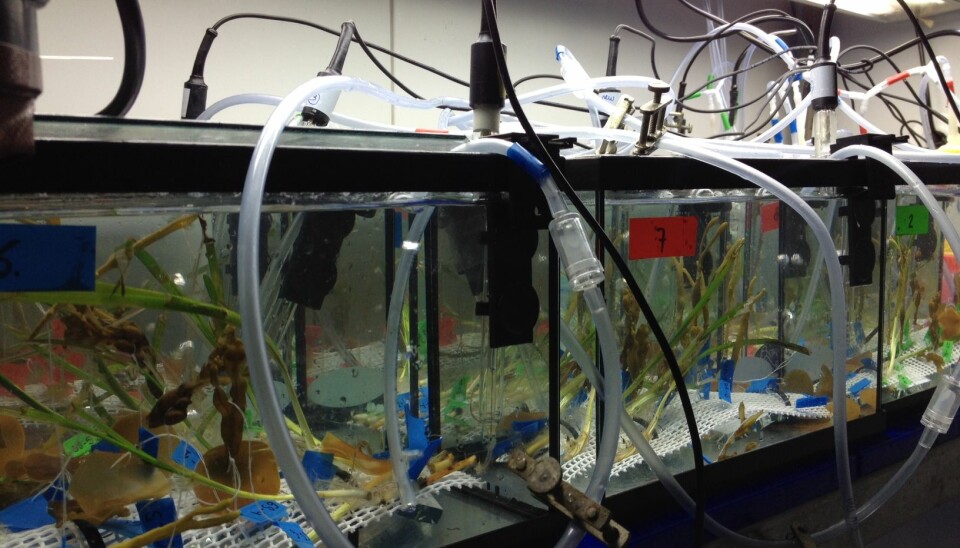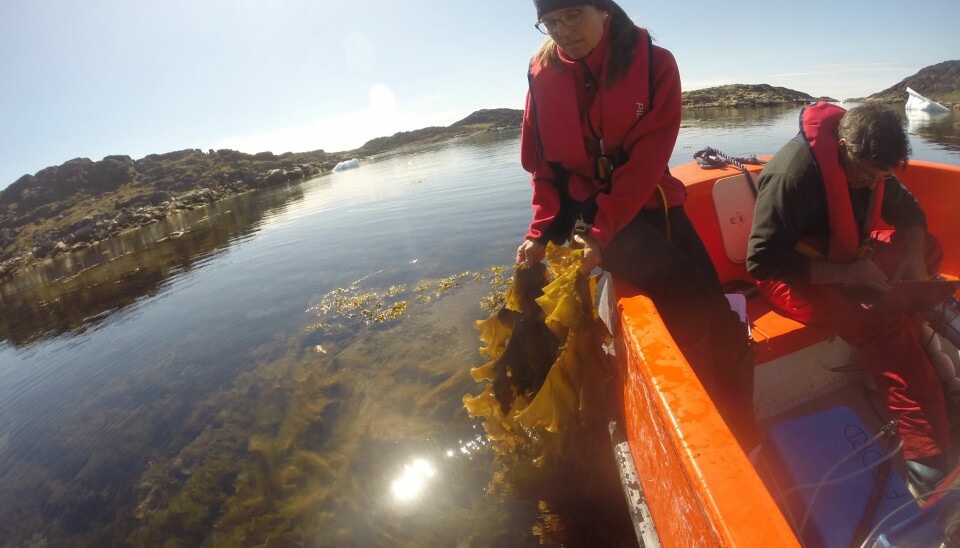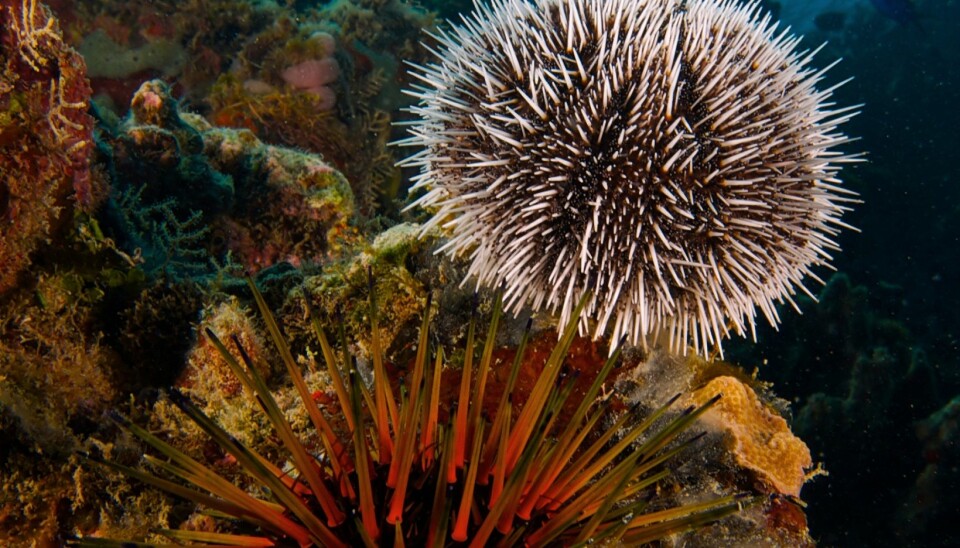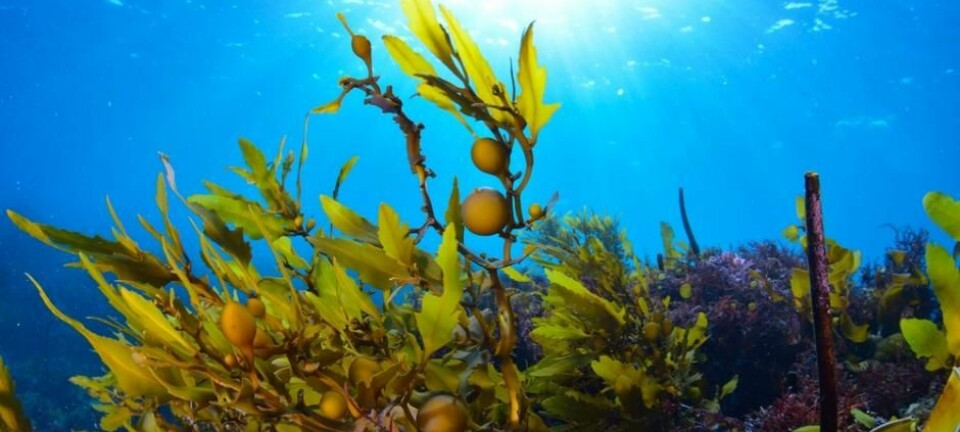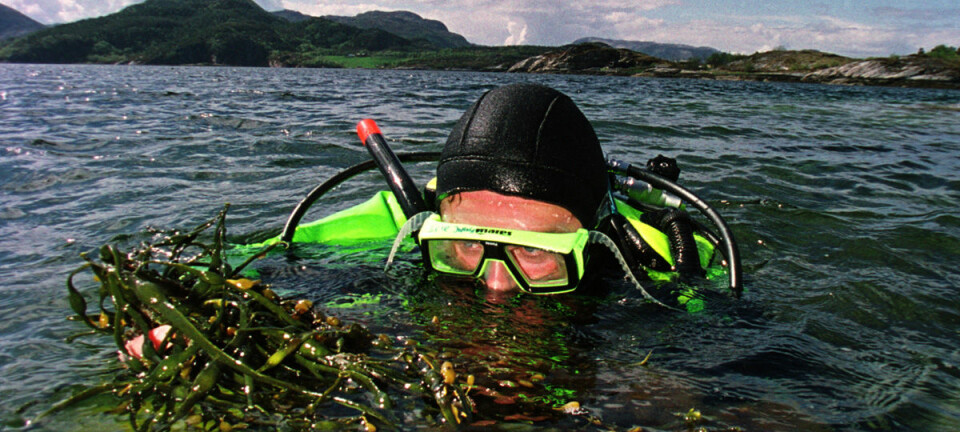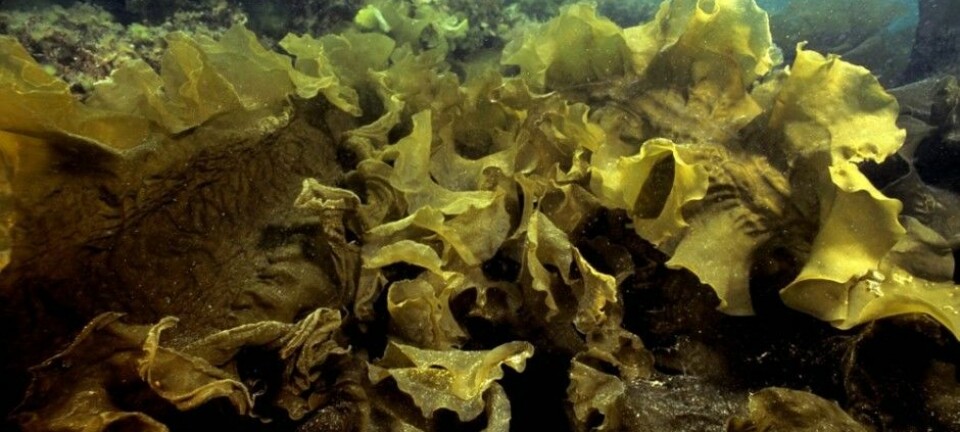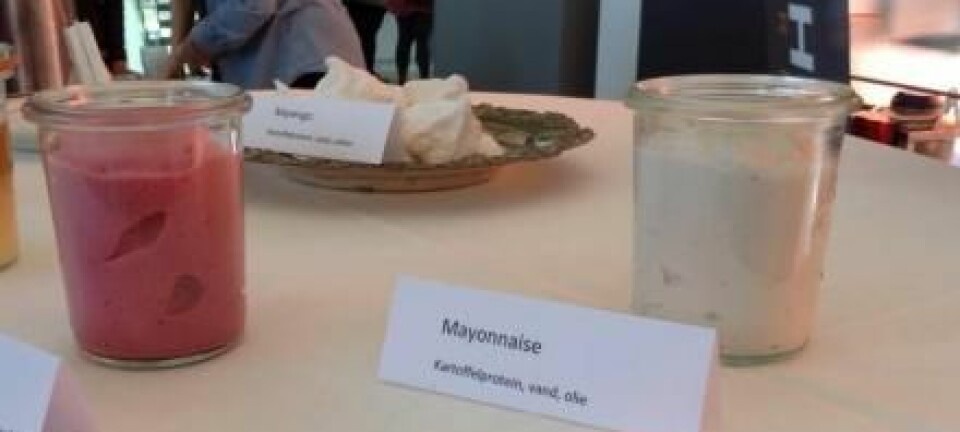Greenland seaweed helps combat ocean acidification
Kelp forests around Greenland take up enough CO2 to locally offset ocean acidification and protect local shellfish, shows new research.
Greenlandic seaweed could help protect a variety of marine animals from some of the worst effects of climate change, concludes a new study.
As carbon dioxide (CO2) in the atmosphere dissolves directly into seawater, it lowers the pH of ocean water and makes it increasingly acidic.
Animals like shellfish and sea urchins, whose shells or skeletons are made of calcium carbonate, are especially vulnerable to degradation under these conditions.
But the new study shows that kelp (seaweed) forests in Greenland can soak up enough of this extra CO2 throughout the Arctic summer to locally offset ocean acidification.
“Kelp forests can help to increase ocean water pH and could potentially be a refuge for calcified sea animals in a more acidified ocean,” says lead-author Dr Dorte Krause-Jensen, from the Department of Bioscience at Aarhus University, Denmark.
The new results are published in Science Advances.
Some good news for the oceans
The new results offer some good news for marine scientists studying the otherwise negative effects of climate change, says marine ecologist Dr Thomas Wernberg, who studies temperate kelp forests at the University of Western Australia.
“I found it interesting because in the context of climate change, there’s been a lot of focus over the last couple of decades on the cataclysmic things that will happen with ocean acidification,” says Wernberg, who was not involved in the new study.
“This is one of the first studies in a new wave of research, that basically documents that there are several natural mechanisms that can actually counter some of those ocean acidification impacts,” he says.
Read More: Greenland could be home to several coral reefs
Marine plants change ocean water chemistry
Previous studies have shown that kelp forests can change the pH of surrounding water over the course of a day, says Krause-Jensen.
“Kelp takes up CO2 during the day by photosynthesis and thereby induces an increase in pH. Whereas at night when they respire, they do the opposite: they release CO2 and ocean water pH decreases,” she says.
Krause-Jensen and her colleagues wondered whether the extensive kelp forests in the Arctic could soak up enough CO2 during the Arctic summer--when the sun never sets--to increase the pH of the surrounding water and offset the trend towards ocean acidification.
“You might ask, isn’t it just a zero sum gain? So we wanted to test this, as it hadn't been done before,” says Krause-Jensen.
Read More: Less fish without kelp
Ocean plants soak up carbon
The scientists monitored seawater CO2 and pH in two kelp forests over the summer: one in Disko Bay in west Greenland, where the sun never sets. And one further south in Nuuk, which has a regular cycle of night and day.
“We left loggers in the kelp for ten days. In Nuuk there was diurnal variation--ups and downs. But in Disko Bay with a 24-hour photoperiod, pH just gradually increased,” says Krause-Jensen.
“In the north, where the sun doesn’t set for many months, it’s likely that this increase could continue throughout the Arctic summer, making the kelp forest an increasingly favourable habitat for shellfish,” says Krause-Jensen.
“In winter it will have the opposite effect,” says Wernberg. “But this is less important, because in the Arctic everything is less active in winter as it’s cold and there’s no light so the organisms are less sensitive at that time.”
Read More: Seaweed plays a surprisingly large role in global climate
Laboratory experiments confirmed field results
To see exactly what was going on, Krause-Jensen and her team constructed replica miniature kelp forests in the laboratory and monitored pH of the water under different conditions.
They exposed the miniature kelp forests to either 12, 15, 18, 21, or 24 hours of daylight, to see how they responded.
“In the lab we saw that the pH of kelp water exposed to 12 or 18 hours of light changed throughout a 24-hour period. Whereas at photoperiods of 21 and 24 hours, the pH gradually increased with no up and down diurnal variation, because there was no night,” says Krause-Jensen.
“Of course there are many other things that vary between the kelp forests in Nuuk and Disko Bay, but combining the field experiment with the laboratory experiments confirmed our hypothesis,” she says.
Read More: Meltwater from West Greenland is a hotspot for ocean nutrients
A win-win situation
And this effect showed no sign of slowing down as concentrations of atmospheric and oceanic CO2 increase.
“In the laboratory, we also exposed some of the plants to different CO2 concentrations: current and projected future concentrations,” says Krause-Jensen.
“As we increased the CO2, we stimulated plant photosynthesis even more. The more CO2 we supplied, the more they were able to soak up and increase the pH in the water,” she says.
Since kelp forests are predicted to expand as the Arctic becomes warmer and sea ice declines, their potential to take up CO2 and combat ocean acidification will only increase, says Krause-Jensen.
Read More: Scientists discover ‘reverse photosynthesis’
“Everything will be cooking before it dies from ocean acidification”
But Wernberg warns that the good news only goes so far.
“One thing that always strikes me is that we focus on ocean acidification, but we have to keep a clear mind on what are the most pressing issues here. And I think that is by far and away increasing temperatures,” he says.
“Everything will be cooking before it dies from ocean acidification, at least that’s my personal opinion.”
Nonetheless, he describes the new results as an “important building block.”
“When you add all the evidence together we can start to get a sound image of what the future will be like. But it’s just one study and we obviously need more of this sort of work,” he says.
-----------------
Read the Danish version of this article on Videnskab.dk

